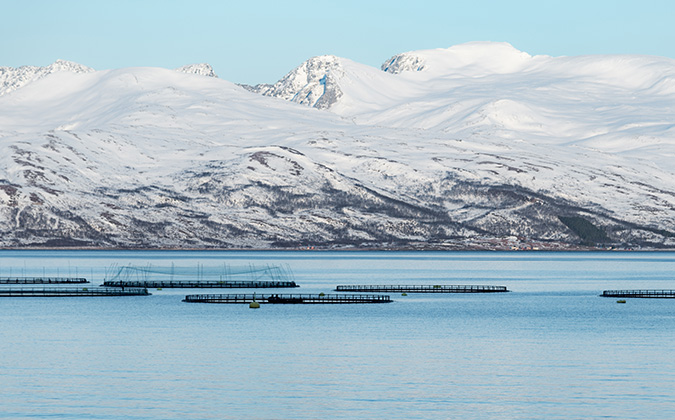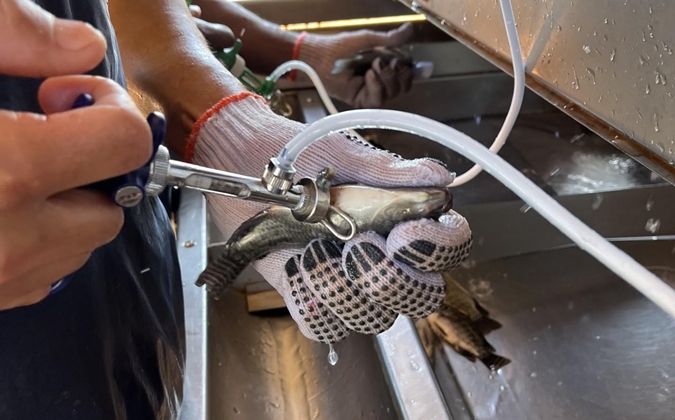
Fish Farm Forum is pleased to host this editorial page on behalf of Pharmaq.
Pharmaq
Distinct bacterial variants make winter ulcer diagnostics ever-more important
A complex genetic picture is posing problems for Norwegian salmon farmers managing stocks affected by winter ulcer.
The disease, which is predominantly caused by the bacterium Moritella viscosa, has a greater effect during the coldest months. The last winter (2021-22) was particularly tough, with many cases of serious wounds on fish, explained Mari Solheim, of PHARMAQ Analytiq.
“The new issue is that we have these atypical wounds, and we find different kinds of bacteria. But Moritella viscosa is thought to be the primary cause of the infection,” she said.
“There’s not one single factor that can explain the changes we are experiencing, but a theory is that the bacterium has evolved over time, as well as an increased amount of handling of the fish during production.”
A complex genetic picture
Behind the bigger problems is the genetic variability of M. viscosa. The last decade has seen the rise in prevalence of “variant” forms of the bacterium, differing from the “classical” form that was first described and treated. The pathogen gets its name from the viscous nature of its thread-forming colonies, but now, a non-viscous variant has arisen on Norwegian fish farms.
“In this variant group, we see a lot of different isolates, from lumpfish and trout as well as salmon. We also have coinfections with both the classical form and all these new variants. The genetic variation within the variants is very big along the coastline here in Norway, and this new non-viscous variant seems to be causing a lot more severe situation for the fish,” Solheim explained.
In-depth testing reveals true situation on farms
Before M. viscosa variants came to dominate, vaccination against the classical form of the bacterium proved successful, she noted. Since then, efficacy has reduced as field isolates differ serologically from the vaccine isolates — meaning that Norwegian salmon producers have been looking to the veterinary pharmaceutical industry for new solutions.
New vaccines are nearing commercial availability, but in the meantime, producers should monitor the variants present on their farms through diagnostic testing of the wounds associated with winter ulcer, Solheim stressed. PHARMAQ Analytiq’s diagnostic methods are able to distinguish between variant and classic M. viscosa, as well as between viscous and non-viscous isolates.
“PCR (polymerase chain reaction) testing is useful, but it will only give you a positive or negative for the species. Further microbiological testing is really important to distinguish and look at the phenotypical characteristics of the bacteria. For example, the only diagnostic tool to confirm whether an isolate is viscous or non-viscous is to grow it on an agar plate,” she continued.
“Microbiology also provides the context of what is found in addition to Moritella. For instance, if you find bacteria such as Vibrio wodanis together with Moritella, it’s usually a sign that you will have worse wounds than if the bacteria is not present.”
Reducing and improving handling
There are other practical steps which can reduce the severity of outbreaks. With the fish’s skin an important barrier against pathogens, handling — for example, during sea lice treatments — presents a risk.
Avoiding handling of fish altogether during colder periods should be an aspiration, Solheim said, but acknowledged that there are points where handling can’t be avoided, such as mandatory lice counts and cleaning of net pens. In such cases, ensuring gentle handling should be the aim, she added.
Posted on: August 11, 2022







